I’ve been on a quest to find relief from nagging leg and back pain, and MagniLife Leg & Back Pain Relief tablets caught my eye with their promise of natural, fast-acting relief. But after trying them and digging into user experiences, I’m hesitant to recommend them outright.
While some folks swear by these quick-dissolving tablets, others, including me, have hit roadblocks with side effects and inconsistent results. Let’s unpack my journey, the pros, cons, and how MagniLife stacks up against other options so you can decide if it’s worth a shot.
My Experience With Magnilife Leg & Back Pain Relief
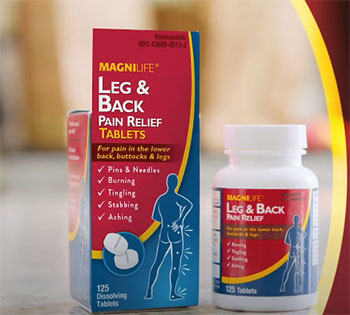
For years, I’ve battled sciatica that flares up after long days at my desk or intense workouts. The sharp, shooting pain down my lower back and legs was enough to make me wince with every step. I stumbled across MagniLife’s quick-dissolving tablets at my local pharmacy, drawn in by the “all-natural” label and claims of soothing burning, tingling, and stabbing pains. The idea of a homeopathic remedy that wouldn’t clash with my other meds was appealing, so I grabbed a bottle of 125 tablets and gave it a go.
The instructions were simple: dissolve two tablets under your tongue two to three times daily. The tablets are tiny, tasteless, and dissolve in about 10 minutes, which was convenient. I started with a dose in the morning and another before bed, hoping to curb my nighttime discomfort. The first couple of days, I noticed a slight easing of the tingling in my legs, which got me hopeful.
By day three, I could move around the house with a bit less stiffness, but the relief wasn’t earth-shattering. My sciatica pain dulled but never vanished, and I still needed my heating pad for serious flare-ups.
After a week, I upped the dose to three times a day, as allowed. The results were hit-or-miss. Some days, I felt looser and more mobile, but others, the pain roared back, especially after sitting for hours. Then came the stomach issues—gas and discomfort that I hadn’t expected. I brushed it off at first, but when I noticed darker stools, I got worried and eased off the tablets.
A quick scan of online reviews confirmed I wasn’t alone; others reported similar digestive woes. After two weeks, I stopped using MagniLife. The partial relief wasn’t worth the side effects, and I was frustrated that it didn’t live up to the glowing testimonials I’d read.
Reflecting on it, I think MagniLife might work better for milder pain or as a preventative rather than a fix for chronic issues like mine. It’s not a total bust, but it’s not a game-changer either. My experience left me curious about what others thought and how it compares to other brands, so I dug deeper to give you the full picture.
Pros of MagniLife Leg & Back Pain Relief
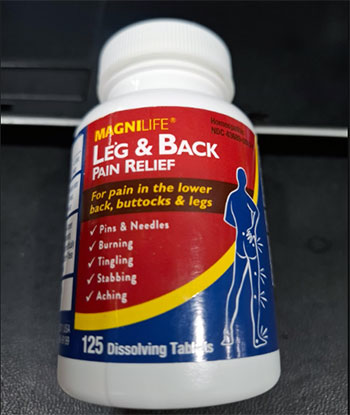
- Natural Ingredients for a Gentler Approach: One thing I appreciated about MagniLife is its homeopathic formula. The active ingredients—like Capsicum annuum, Colocynthis, Gnaphalium polycephalum, and Magnesia phosphorica—are plant-derived and listed in the Homeopathic Pharmacopeia of the United States (HPUS). For someone like me, who’s wary of synthetic painkillers that can mess with my stomach or liver, this was a big plus. Many users on Walmart.com praised the “all-natural” vibe, saying it let them cut back on heavier meds like gabapentin without feeling doped up. If you’re looking for a non-habit-forming option, MagniLife fits the bill.
- Easy to Use and Portable: The quick-dissolving tablets are a win for convenience. You don’t need water, and they’re small enough to toss in your bag for on-the-go relief. I found this super handy during work hours when I couldn’t pop a pill with a glass of water. Reviews on Amazon echoed this, with users loving how the tablets melt under the tongue in under 10 minutes with no chalky aftertaste. For folks with busy lifestyles, this portability and ease of use make MagniLife a practical choice, especially if you’re dodging the hassle of creams or gels.
- Minimal Drug Interactions: MagniLife’s website emphasizes that these tablets can be taken alongside other over-the-counter or prescription medications without interference. This was a relief for me, as I’m on a low-dose blood pressure med and didn’t want any surprises. Users on influenster.com noted this as a standout feature, especially for those juggling multiple health conditions. If you’re cautious about mixing meds, MagniLife’s compatibility is a strong point, though you should still check with your doctor for peace of mind.
- Potential for Preventative Use: Unlike some pain relievers that only tackle symptoms as they hit, MagniLife can be used preventatively. The packaging suggests taking it regularly to ward off flare-ups, which appealed to me as someone with recurring sciatica. A user on easycomforts.com mentioned taking it weekly to keep sciatic pain at bay, and I tried this approach for a few days. While it didn’t fully prevent my pain, it seemed to reduce the intensity of minor twinges. For those with intermittent discomfort, this dual symptomatic and preventative use could be a game plan worth exploring.
- Wide Availability: You can find MagniLife at major retailers like Walmart, Amazon, CVS, and Walgreens, both online and in-store. This accessibility made it easy for me to grab a bottle without hunting down a specialty shop. The consistent pricing—around $20 for 125 tablets—feels reasonable for a month’s supply, though some Amazon reviewers grumbled about the cost if you’re taking the max dose of six tablets daily. Still, the widespread availability means you’re not stuck waiting for a shipment when pain strikes.
Also read: My Thoughts on Itsuki Kenko Health Patch Reviews.
Cons of MagniLife Leg & Back Pain Relief
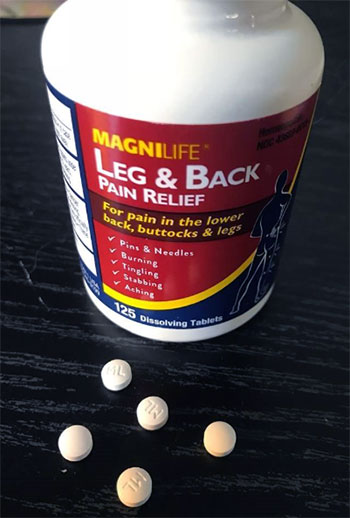
- Inconsistent Effectiveness: The biggest letdown for me was MagniLife’s spotty performance. While it dulled my pain some days, it never fully knocked it out, and other users agree. A Reddit post on the sciatica subreddit mentioned “remarkable results” when paired with another cream, but standalone, MagniLife fell short for many. Amazon reviews were mixed, with some saying it “helps but doesn’t relieve” chronic pain, and another called it “a wasted effort” for back pain. If you’re dealing with severe or persistent pain, you might find MagniLife underwhelming, like I did.
- Side Effects for Some Users: Those stomach issues I mentioned? They’re not uncommon. Reviews on Amazon and Walmart flagged digestive problems like gas, upset stomach, and even black stools, which scared me enough to stop. One user with high blood pressure suspected MagniLife spiked their readings and caused leg cramps after months of use. While the product claims “no known side effects,” these reports suggest otherwise for some folks. If you’ve got a sensitive system, proceed with caution and monitor how your body reacts.
- Slow or No Results for Some: MagniLife’s website admits relief can take up to six weeks, which is a long haul when you’re in pain. I gave it two weeks, but others on Amazon quit after a month, saying it “didn’t do anything” or tasted like “chalk” with no payoff. A review on influenster.com complained the tablets didn’t dissolve properly, making the process frustrating. If you’re looking for instant relief, MagniLife’s gradual approach might test your patience, especially if it doesn’t work at all.
- Cost Adds Up for High Doses: At about $20 for 125 tablets, MagniLife seems affordable, but if you’re taking four to six tablets daily for severe pain, you’ll burn through a bottle in two to three weeks. An Amazon reviewer pointed out that Advil or Aleve are cheaper for similar (or better) relief, though they carry risks with long-term use. For budget-conscious folks, the cost of MagniLife can sting, especially if the results are mediocre. I felt this pinch when I realized I’d need to reorder sooner than expected.
- Questionable Efficacy of Homeopathy: Here’s where I get skeptical. MagniLife’s homeopathic ingredients are diluted to the point where their effectiveness is debated. The FDA hasn’t evaluated these tablets for safety or efficacy, and a 2013 Quackwatch warning letter flagged MagniLife for unverified claims about other products. While some users swear by the formula, others, like me, wonder if the relief is placebo-driven. If you’re not sold on homeopathy, you might question whether MagniLife’s ingredients are doing much at all.
Comparison with Other Brands
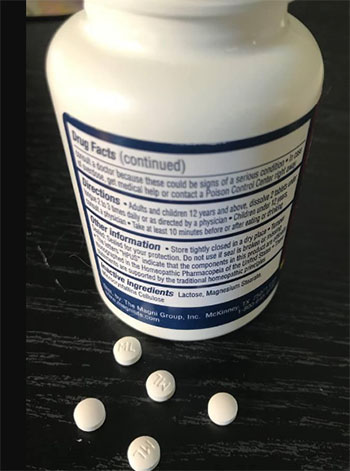
Let’s see how MagniLife stacks up against other pain relief options. I’ve tried a few, and I’ve scoured reviews to compare them fairly.
- Biofreeze Gel: Biofreeze is a topical gel with menthol that delivers a cooling sensation to numb pain. I’ve used it for muscle aches, and it works fast—within minutes—for localized pain. Unlike MagniLife’s tablets, Biofreeze is external, so no digestive risks, but it’s messy and needs reapplying every few hours. Amazon reviews give it high marks for arthritis and sciatica, but some dislike the strong minty smell. It’s cheaper at $15 for a 4 oz tube, but MagniLife’s oral approach is less fuss for all-day relief.
- Aspercreme with Lidocaine: Aspercreme’s lidocaine cream targets nerve pain with a numbing effect. I found it more effective than MagniLife for my sciatica, especially for sitting pain, and it lasts up to eight hours. Walmart reviews praise its non-greasy feel, though some report skin irritation. At $10 for 2.7 oz, it’s budget-friendly, but you’re limited to topical use. MagniLife’s systemic relief might appeal if you want something internal, but Aspercreme’s stronger punch won me over.
- Advil (Ibuprofen): Advil’s a go-to for many, including me, when pain gets intense. It’s an NSAID that reduces inflammation, tackling back and leg pain more reliably than MagniLife in my experience. Amazon users note it’s cheaper—$12 for 100 tablets—but long-term use risks stomach and kidney issues. MagniLife’s natural formula is safer for daily use, but Advil’s faster, broader relief makes it a staple for acute pain.
- Hyland’s Leg Cramps: Hyland’s is another homeopathic option with similar ingredients like Magnesia phosphorica. I haven’t tried it, but reviews on Walgreens.com suggest it’s hit-or-miss, much like MagniLife. It’s slightly cheaper at $18 for 100 tablets, but users complain about slow dissolution. MagniLife’s wider availability gives it an edge, but neither stands out as a clear winner in the homeopathic space.
Overall, MagniLife’s ease of use and natural formula are appealing, but its inconsistent results and side effects make alternatives like Aspercreme or Advil more reliable for me. If you prefer homeopathy, Hyland’s is a comparable option, but topical treatments like Biofreeze might offer quicker relief without the wait.
Tips For Using Magnilife Leg & Back Pain Relief
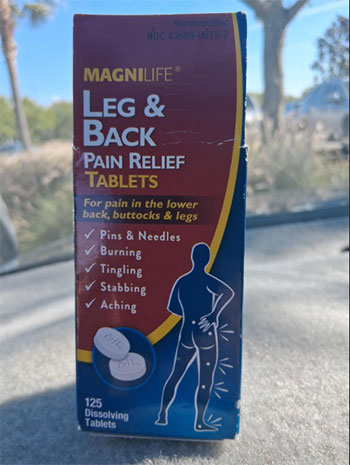
- Follow Dosage Instructions Carefully: To get the most out of MagniLife, stick to the recommended dose: two tablets under the tongue, two to three times daily. I learned the hard way that overdoing it doesn’t guarantee better results and might trigger side effects. Set reminders on your phone to space out doses evenly, and don’t take more than six tablets a day unless your doctor okays it. If you’re using it preventatively, try a consistent morning and evening routine to keep symptoms at bay.
- Store Properly for Longevity: MagniLife’s tablets are homeopathic, so they’re stable and don’t expire under normal conditions. Keep them in a cool, dry place—away from moisture or extreme heat—to maintain potency. I stored mine in a bathroom cabinet, which was a mistake due to humidity. A kitchen drawer or bedside table is better. The bottle’s small, so it’s easy to tuck away, but check the seal to ensure no air gets in, which could affect the tablets’ texture.
- Monitor Your Body’s Response: Since side effects like stomach upset or cramps popped up for me and others, pay close attention to how you feel. Start with a lower dose—maybe once or twice daily—and track any changes in a journal. If you notice digestive issues, high blood pressure spikes, or unusual symptoms, stop and consult a doctor. MagniLife’s website suggests giving it six weeks, but don’t push through discomfort just to hit that mark. Your body’s signals matter more.
- Pair with Lifestyle Changes: MagniLife alone won’t fix chronic pain, so combine it with habits that support relief. I found gentle stretches, like cat-cow yoga poses, eased my sciatica when paired with the tablets. A heating pad or warm bath before bed also boosted the tablets’ effect. Stay hydrated, as dehydration can worsen muscle cramps, and avoid sitting for long stretches—set a timer to stand every 30 minutes. These tweaks made a bigger difference than MagniLife alone.
- Consult a Healthcare Professional: Before starting MagniLife, especially if you have conditions like diabetes or high blood pressure, talk to your doctor. I wish I’d done this, given my stomach issues. They can confirm it won’t interact with your meds and advise on safe use. If pain persists beyond seven days or worsens, as the label warns, see a physician to rule out serious issues like herniated discs. MagniLife’s not a cure-all, so professional guidance ensures you’re on the right track.
Read More: My Thoughts on Donama Cervical Pillow Reviews.
Frequently Asked Questions (FAQ)
MagniLife Leg & Back Pain Relief tablets contain several active homeopathic ingredients, including Capsicum annuum 6X HPUS (for pain from hips to feet), Colocynthis 6X HPUS (for hip-to-knee and leg pain), Gnaphalium polycephalum 6X HPUS (pain reliever), and Magnesia phosphorica 6X HPUS (for lower back pain). These are diluted plant-based compounds listed in the Homeopathic Pharmacopeia of the United States.
The “best” painkiller depends on your needs. For me, Aspercreme with lidocaine worked better than MagniLife for sciatica, offering fast, targeted relief. Advil (ibuprofen) is great for inflammation-driven pain but risks side effects with long-term use. Biofreeze gel is another solid option for quick, topical relief. Always consult a doctor to find what’s safest and most effective for you.
Results vary widely. Some users on Amazon reported relief within days, especially for mild pain, while others, like me, saw minimal improvement after two weeks. MagniLife’s website suggests it could take up to six weeks for full effect, particularly for chronic issues. If you don’t notice changes after a month, it might not be the right fit.
Adults and children 12 and older can dissolve two tablets under the tongue two to three times daily, as directed on the package. Don’t exceed six tablets per day unless a doctor advises otherwise. If pain persists beyond seven days, consult a physician, as the label warns.
Conclusion: Should You Try MagniLife?
After my rollercoaster with MagniLife Leg & Back Pain Relief, I can’t wholeheartedly recommend it. The natural ingredients, ease of use, and compatibility with other meds are tempting, but the inconsistent relief, potential side effects, and slow results left me wanting more. For mild or occasional pain, it might be worth a try, especially if you’re into homeopathy. But for chronic issues like mine, alternatives like Aspercreme or Biofreeze pack a stronger punch without the digestive risks. Weigh your options, talk to your doctor, and decide what feels right for your pain journey.
